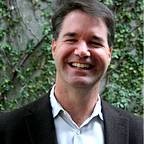Thesis — Synchronous College
I remember when MOOCs came out. I took one long sigh and hunkered down for a decade of student misery. Let’s unpack that. The compelling thing about MOOCs is that they require almost no behavior change from professors. They sit up there lecturing but now someone has a video camera on. Then they publish that to the world and millions watch. What could be better?
The problem of course is that the vast majority of people are not auto-didacts and because the professor has removed the interactive element of learning, they are no easier to consume than a textbook. So it was not at all shocking that 5–10% of students would ever finish these classes. To be fair, it is true that if a student in India wanted to listen to a lecture by a Stanford professor, this was a great thing. Providing ‘access’ was definitely better than not providing access. But there was no chance that it would create a step function in learning.
I am a very big fan of something called Deliberate Practice for learning. Basically the learner must work hard at a specific goal, measuring their progress, and having a coach which helps them figure out what they are doing wrong until they can self-correct. Sports is probably the area where this form of learning has been best implemented. Universities are one of the best examples of where this has been poorly implemented. Universities rely on the brands of professors, so they are the stars, and hundreds of students sit in lecture halls listening to them. So it’s easy to see why a MOOC would be appealing. I’m a star, but now I’m an even bigger star! Luckily K-12 has to teach all students, not just the elites, so we’ve had to go to first principles to figure out how students learn. We threw out ‘Sage on the Stage’ as a good teaching method long ago, even though you will still see some teachers continue to use the practice.
If we want to redesign college, what should we do? The amazing thing to me is that it has already been done. In the 1980’s, Stanford created a program in engineering where people in industry could take classes remotely. The classes were beamed like TV to their buildings (I think via satellite!) synchronously, and students could ask questions via micro-phones of their professors and TAs in real time. I did my master’s degree this way and it was frankly better than being in-person as an undergrad because they recorded the lectures and I could re-watch and then ask questions of my TAs later if I needed.
So that was a small step in the right direction, but it was thrown out when the Internet came and asynchronous content came to power. Again, what could be better than broadcasting to millions of students without them bothering you!
My thesis on college is that we are going to figure out the best of both worlds. The live interaction with very smart professors and TAs, along with the advantages of being able to do this remotely (no travel, no local real estate costs for students, much greater flexibility) and have a big chunk of self-learning as students work to master material.
At this point, many of you are saying ‘Wait, wait, wait, that’s Minerva!’ But Minerva sadly came too early. The tools weren’t ready for a synchronous college until a couple of years ago. We had to wait for Zoom and Slack to make this kind of communication reliable and scalable. So Minerva and those like it were simply too early.
The key to all of this is the intentionality with which this live online culture is built in a college. It cannot be an afterthought, because the student experience will live or die by how it feels. If you feel like a second-class citizen, or you can’t get the help you need, we will be back in the world of MOOCs. I am looking forward to seeing what founders build to reinvent college, making it available to many more people, but also building it so that any motivated person can learn.
